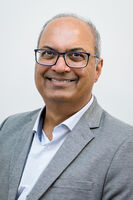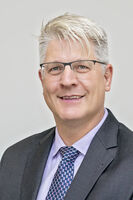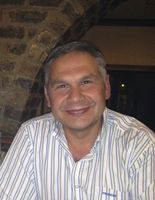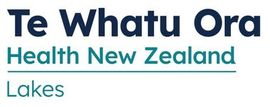Lakes > Public Hospital Services > Te Whatu Ora – Health New Zealand Lakes >
Orthopaedics | Lakes | Te Whatu Ora
Public Service, Orthopaedics
Description
Formerly Lakes DHB Orthopaedics
We are a small specialist team performing acute and elective Orthopaedics surgeries.
Day Stay Unit
Day Stay Unit is our point of entry for elective surgical patients. The unit has 10 beds and 27 La-Z-Boy chairs and is currently open from 7.00am - 5.30pm. As patients arrive they are assessed and prepared for their surgery.
Orthopaedic Unit
The Orthopaedic Unit cares for predominantly orthopaedic elective and acute patients, but also manages acute and elective gynaecology and general surgery patients. The Orthopaedic Unit has 25 beds.
Where to find us: see the Rotorua Hospital map here.
The Orthopaedic team are based at Rotorua Hospital but provide visiting services to Taupō Hospital.
What is Orthopaedics?
This is an area that deals with conditions of the musculoskeletal system (disorders of bones and joints of the limbs and spine). The specialty covers a range of different types of conditions starting with congenital (conditions which children are born with) through to degenerative (conditions relating to the wearing out of joints). The field of orthopaedics covers trauma where bones are broken or injuries are sustained to limbs.
Other conditions that sit under the spectrum of orthopaedics are metabolic conditions, neurological and inflammatory conditions.
Consultants
Note: Please note below that some people are not available at all locations.
-

Mr Viren Kasipersad
Orthopaedic Surgeon
Available at all locations.
-

Mr Arpad Konyves
Orthopaedic Surgeon
Available at Rotorua Hospital
-

Mr Jonathan Lescheid
Orthopaedic Surgeon
Available at all locations.
-

Dr Mary Nugent
Orthopaedic Surgeon
Available at all locations.
-
Mr Martyn Sims
Orthopaedic Surgeon
Available at all locations.
-

Mr Francois Van Der Westhuizen
Orthopaedic Surgeon - Head of Department
Available at all locations.
Referral Expectations
Your GP will send us a letter explaining your condition. We will make an appointment time for you, based on your health need, and send it directly to you. For urgent needs e.g. serious infections or malignant tumours you will be seen right away. For other conditions e.g. painful arthritis that makes movement difficult, you will be seen within 18 months.
You will be seen in the outpatient ward by specialist doctors who will discuss treatment options and recommendations with you.
You need to bring with you:
- Any letters or reports from your doctor or other hospital.
- Any X-Rays, CT or MRI films and reports.
- All medicines you are taking including herbal and natural remedies.
- Your pharmaceutical entitlement card.
- Your ACC number, if you have one.
Fees and Charges Description
New Zealand citizens or those who have obtained permanent residence are entitled to publicly funded health care.
Non-residents may be required to pay for their health care.
Click here to read more about eligibility for funded care at Te Whatu Ora Lakes
Procedures / Treatments
These clinics are run by most orthopaedic departments for patients that have sustained an injury that has already been treated and further follow-up of that injury is required, to monitor progress of a healing bone, check the position of the bone in a cast and to decide when other steps in management such as re-manipulation of fracture, removal of a cast or change of the management plan is required. Often at these fracture clinics x-rays are taken on arrival. Although an appointment time is given, the time to have x-rays, casts removed, other treatments instigated may take several hours. Other appointments will be quick and efficient if these other procedures are not needed.
These clinics are run by most orthopaedic departments for patients that have sustained an injury that has already been treated and further follow-up of that injury is required, to monitor progress of a healing bone, check the position of the bone in a cast and to decide when other steps in management such as re-manipulation of fracture, removal of a cast or change of the management plan is required. Often at these fracture clinics x-rays are taken on arrival. Although an appointment time is given, the time to have x-rays, casts removed, other treatments instigated may take several hours. Other appointments will be quick and efficient if these other procedures are not needed.
These are clinics for patients that have been referred by their doctor for an orthopaedic opinion on a specific concern. These clinics are usually attended by a specialist orthopaedic surgeon who will be available to advise on diagnosis and management. Often at the clinics x-rays will be taken, if not already taken and sometime other investigations such as ultrasound scans may be taken.
These are clinics for patients that have been referred by their doctor for an orthopaedic opinion on a specific concern. These clinics are usually attended by a specialist orthopaedic surgeon who will be available to advise on diagnosis and management. Often at the clinics x-rays will be taken, if not already taken and sometime other investigations such as ultrasound scans may be taken.
Clinics for specific parts of the body or specific conditions. Examples of these will be an orthopaedic tumour clinic or a spinal clinic. Here the patients with specific problems are seen by the appropriate doctors and support staff for their special needs.
Clinics for specific parts of the body or specific conditions. Examples of these will be an orthopaedic tumour clinic or a spinal clinic. Here the patients with specific problems are seen by the appropriate doctors and support staff for their special needs.
For elderly patients joint replacement surgery is commonly required to treat damaged joints from wearing out, arthritis or other forms of joint disease including rheumatoid arthritis. In these procedures the damaged joint surface is removed and replaced with artificial surfaces normally made from metal (chromium cobalt alloy, titanium), plastic or ceramic which act as alternate bearing surfaces for the damaged joint. These operations are major procedures which require the patient to be in hospital for several days and followed by a significant period of rehabilitation. The hospital has several ways of approaching the procedure for replacement and the specifics for the procedure will be covered at the time of assessment and booking of surgery. Occasionally blood transfusions are required; if you have some concerns raise this with your surgeon during consultation.
For elderly patients joint replacement surgery is commonly required to treat damaged joints from wearing out, arthritis or other forms of joint disease including rheumatoid arthritis. In these procedures the damaged joint surface is removed and replaced with artificial surfaces normally made from metal (chromium cobalt alloy, titanium), plastic or ceramic which act as alternate bearing surfaces for the damaged joint. These operations are major procedures which require the patient to be in hospital for several days and followed by a significant period of rehabilitation. The hospital has several ways of approaching the procedure for replacement and the specifics for the procedure will be covered at the time of assessment and booking of surgery. Occasionally blood transfusions are required; if you have some concerns raise this with your surgeon during consultation.
The division of a crooked or bent bone to improve alignment of the limb. These procedures normally involve some form of internal fixation, such as rods or plates, or external fixation which involves external wires and pins to hold the bone. The type of procedure for fixation will be explained when the surgery is planned.
The division of a crooked or bent bone to improve alignment of the limb. These procedures normally involve some form of internal fixation, such as rods or plates, or external fixation which involves external wires and pins to hold the bone. The type of procedure for fixation will be explained when the surgery is planned.
Over the last 30 years a large number of orthopaedic procedures on joints have been performed using an arthroscope, where a fiber optic telescope is used to look inside the joint. Through this type of keyhole surgery, fine instruments can be introduced through small incisions (portals) to allow surgery to be performed without the need for large cuts. This allows many procedures to be performed as a day stay and allows quicker return to normal function of the joint. Arthroscopic surgery is less painful than open surgery and decreases the risk of healing problems. Arthroscopy allows access to parts of the joints which cannot be accessed by other types of surgery.
Over the last 30 years a large number of orthopaedic procedures on joints have been performed using an arthroscope, where a fiber optic telescope is used to look inside the joint. Through this type of keyhole surgery, fine instruments can be introduced through small incisions (portals) to allow surgery to be performed without the need for large cuts. This allows many procedures to be performed as a day stay and allows quicker return to normal function of the joint. Arthroscopic surgery is less painful than open surgery and decreases the risk of healing problems. Arthroscopy allows access to parts of the joints which cannot be accessed by other types of surgery.
In many cases tendons will be lengthened to improve the muscle balance around a joint or tendons will be transferred to give overall better joint function. This occurs in children with neuromuscular conditions but also applies to a number of other conditions. Most of these procedures involve some sort of splintage after the surgery followed by a period of rehabilitation, normally supervised by a physiotherapist.
In many cases tendons will be lengthened to improve the muscle balance around a joint or tendons will be transferred to give overall better joint function. This occurs in children with neuromuscular conditions but also applies to a number of other conditions. Most of these procedures involve some sort of splintage after the surgery followed by a period of rehabilitation, normally supervised by a physiotherapist.
Pharmacy
Click here to find your nearest community pharmacy.
Other
Click on the location links for more information on your trip to Rotorua Hospital or Taupō Hospital, including:
- Visiting hours
- Travel directions
- Public transport
- Parking
- Refreshments
- Security
- Transport and accommodation assistance
Website
Was this page helpful?
This page was last updated at 11:32AM on April 2, 2024. This information is reviewed and edited by Orthopaedics | Lakes | Te Whatu Ora.

